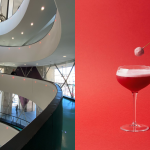
Palazzo Venier dei Leoni: the treasure of Venice
Discovering the secret history of the current headquarters of the Peggy Guggenheim Collection
November 17th, 2018
The city of Venice boasts a mysterious and famous fascination that existed for centuries over the entire world population. It's only when you grow up and you're free to lose yourself in its labyrinthine streets that begin to taste its magic. So, a bit 'at a time, even if you continue to share the famous popular maxim "Venice is beautiful, but I would not live there", discover the bridges, the hidden shops, the taverns, the smells, the play of light with which the lagoon water animates all that surrounds it.
Among the many splendid examples of architecture of this city, one is located in the Dorsoduro district, overlooking the Grand Canal which is difficult to overlook: Palazzo Venier dei Leoni. The clean lines and the nivea ashlar-faced Istrian stone facade decorated at the water level with eighteen lion heads (hence the name) draw attention to this single-storey structure and underline its main feature, that is, his being unfinished ("Never Finish as the Venetians call him"). The initial project, developed by Lorenzo Boschetti in the 18th century at the behest of the Veniers, one of the city's oldest and most influential families, was decidedly more ambitious. In fact, the architect, aspiring to follow the imprint left in the city by masters such as Palladio and Longhena, envisaged the construction of three floors and a magnificent classical façade with triple arches that would have served as a counterweight to the opposite Palazzo Corner. Unfortunately, all this remained only a beautiful idea never completed and the work, which began in 1748, was interrupted a year later, even if there were conflicting opinions on why. According to some, the powerful Corner family blocked the construction site so as not to see their residence obscured (Ca'Granda); while others claim that the heirs of the Venier forced by testamentary constraints started the construction, but, due to financial problems, they limited themselves to the part of the ground floor. So during the twentieth century, after a long series of judicial disputes, the building became the home of three of the most iconic women of their time.
The first to become its owner was, between 1910 and 1924, the Marquise Luisa Casati Stampa. Her figure is legendary: one of the richest women in Italy, the muse of Gabriele D'Annunzio, patron of an infinite number of artists, from Man Ray to Kees van Dongen. Her life was a work of art and Venier Palace her stage. To make it such Luisa assumed an army of workers covering the interior of marble (the black and white floor was transported from her Roman palace), glass and gold, in contrast to the almost crumbling exterior. Deeply eccentric and nonconformist, she was a sort of Lady Gaga of the early 20th century who gave sumptuous and decadent feasts in masks in which she wore headdresses of snakes.

It is still told today that during his stay in the lagoon, the crowd gathered to watch her cross St. Mark's Square accompanied by her pet, an elegant cheetah. After the Marchesa, the new tenant was lady Doris Castlerosse, remembered by the painter Derek Hill as "one of the most chic and most attractive people ever existed", also known today to be the great-aunt of the model Cara Delevingne. With her, the house bought, among other details, Liberty stuccos on the walls and six bathrooms in black marble with a bathtub built into the floor.
Later the building was occupied in turn by three armies, the German, the British and the American, until, in 1948, passed into the hands of Peggy Guggenheim, visionary collector of modern art moved to Venice from New York in search of a new beginning. The American heiress and gallerist lived here until his death in 1979 (in truth, he never left because his grave is next to his dogs in the garden), starting, almost immediately, to expose to the public the works collected over the years, pieces of legendary artists such as Max Ernst (ex-husband of Peggy), Kandinskji, Duchamp, Pablo Picasso or Jackson Pollock. In 1980, one year after the death of the woman, Palazzo Venier dei Leoni became, and still is today, home to the Peggy Guggenheim Collection, aka one of the most important collections of contemporary art in the world and the most complete in terms of works and artists of the first half of the twentieth century.
A little literary tip: if you have been fascinated by Palazzo Venier dei Leoni and want to know more about its eccentric owners we suggest you read the book by Judith Mackrell The Unfinished Palace: Life, Love and Art in Venice.






































































